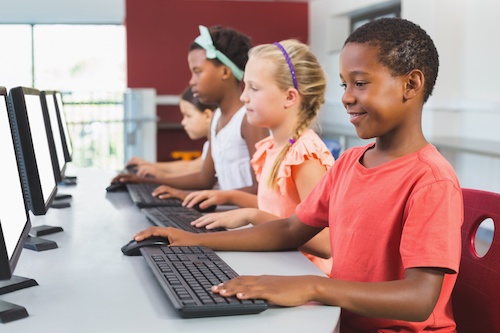Key points:
- Teaching tools help educators create dynamic learning environments
- Learn about new strategies for teaching tools and techniques
- Stay up to date on the latest in classroom learning trends
The tools of teaching in the classroom encompass a wide range of resources and methodologies utilized by educators to facilitate effective instruction and enhance student learning experiences. From traditional tools like textbooks and whiteboards to innovative technologies and instructional strategies, these resources shape the classroom learning environment and promote academic success. So, what are the tools of teaching in the classroom? Let’s explore.
What are the tools of teaching in the classroom?
Teaching tools and techniques in the K-12 classroom encompass a diverse array of resources and methodologies essential for effective instruction and student engagement. Traditional tools such as textbooks, whiteboards, and manipulatives provide foundational support for delivering content and facilitating interactive learning experiences. These tangible resources allow educators to present information visually, engage students in hands-on activities, and reinforce key concepts.
Moreover, educational technology plays a significant role in modern classrooms, with tools like interactive displays, educational software, and online platforms offering opportunities for personalized learning experiences and collaboration. These digital resources provide access to multimedia content, interactive lessons, and virtual simulations, enriching learning experiences and catering to diverse student needs.
Additionally, instructional strategies such as differentiated instruction, cooperative learning, and inquiry-based learning serve as vital techniques for optimizing the use of teaching tools in the classroom. By adapting instruction to accommodate diverse learning styles, fostering collaboration, and promoting inquiry and exploration, educators create dynamic and inclusive learning environments that facilitate student success and academic achievement.
Overall, by integrating a variety of teaching tools and techniques, educators can create dynamic and engaging learning environments that empower students to thrive academically and develop essential skills for lifelong learning.
What are the tools of learning?
Tools teachers use in the K-12 classroom encompass a wide range of resources and methodologies designed to enhance instruction and support student learning. Traditional tools such as textbooks, whiteboards, and manipulatives serve as foundational resources for delivering content and facilitating interactive learning experiences. These tangible resources allow educators to present information visually, engage students in hands-on activities, and reinforce key concepts.
Moreover, educational technology plays a significant role in modern classrooms, with tools like interactive displays, educational software, and online platforms offering opportunities for personalized learning experiences and collaboration. These digital resources provide access to multimedia content, interactive lessons, and virtual simulations, enriching learning experiences and catering to diverse student needs.
Additionally, instructional strategies such as differentiated instruction, cooperative learning, and inquiry-based learning serve as vital techniques for optimizing the use of teaching tools in the classroom. By adapting instruction to accommodate diverse learning styles, fostering collaboration, and promoting inquiry and exploration, educators create dynamic and inclusive learning environments that facilitate student success and academic achievement.
Overall, by integrating a variety of teaching tools and techniques, educators can create dynamic and engaging learning environments that empower students to thrive academically and develop essential skills for lifelong learning.
What are the 5 methods of teaching?
Educational tools for students are used in a variety of methods by educators to facilitate effective learning experiences. One method is direct instruction, where teachers deliver content through lectures, demonstrations, and guided practice. This traditional approach provides structured learning experiences and ensures students receive foundational knowledge essential for understanding complex topics.
Another method is inquiry-based learning, which encourages students to explore topics independently, ask questions, and seek answers through investigation and discovery. By fostering curiosity and critical thinking skills, this student-centered approach promotes deeper understanding and long-term retention of knowledge.
Furthermore, cooperative learning emphasizes teamwork and peer interaction through group activities, discussions, and projects. This method encourages communication skills, cooperation, and collective problem-solving, preparing students for collaborative work environments and real-world challenges.
Additionally, experiential learning provides hands-on experiences and real-world applications of knowledge. Through experiments, field trips, and simulations, students engage with concepts in authentic contexts, reinforcing understanding and fostering practical skills.
Moreover, technology integration serves as a valuable method for enhancing learning experiences. Educational software, multimedia presentations, and online resources offer opportunities for personalized learning, skill development, and access to a wealth of information. By incorporating these five methods of teaching, educators can create dynamic and inclusive learning environments that cater to diverse student needs and promote academic success.
What tools does a teacher use in the classroom?
Tools teachers use in the classroom encompass a diverse range of resources and methodologies aimed at enhancing instruction and promoting student engagement. These include traditional tools such as textbooks, whiteboards, and manipulatives, which provide foundational support for delivering content and facilitating interactive learning experiences.
Additionally, educational technology plays a significant role, with tools like interactive displays, educational software, and online platforms offering opportunities for personalized learning experiences and collaboration.
Moreover, instructional strategies such as differentiated instruction, cooperative learning, and inquiry-based learning serve as vital techniques for optimizing the use of teaching tools in the classroom. By integrating a variety of these tools and techniques, educators create dynamic and engaging learning environments that cater to the individual needs of students and promote academic success.
Conclusion
Classroom teaching tools encompass a variety of resources and methodologies crucial for effective instruction and student engagement. By integrating traditional tools with modern technologies and instructional strategies, educators create dynamic learning environments that foster academic success and prepare students for lifelong learning.
- Classroom Learning - April 5, 2024
- Advantages and Disadvantages of Classroom Management - April 5, 2024
- What are Disadvantages of Classroom Management? - April 5, 2024

